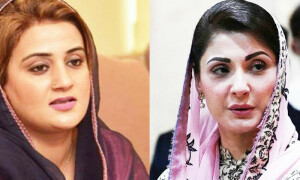The power sector lies at the heart of the government’s efforts to revive the economy. It is where the majority of all investments related to the China-Pakistan Economic Corridor (CPEC) is coming in. And the promise to eliminate loadshedding before 2018 is central to the Pakistan Muslim League-N’s election strategy.
At the centre of the power sector sits the secretary of water and power, with a large say in all decisions. Younus Dagha was a newcomer to Islamabad when he took charge of the position in 2013. Today he can credibly claim to be one of the most important bureaucrats working in the capital. Dawn asked him for his take on a few questions that have been circulating in the public discourse surrounding his work.
Q: With growing investment in the power sector, how important is it for the regulator (Nepra) to be empowered and independent?
A: There can’t be two opinions on this. We need to ensure that regulatory framework not only provides for an independent regulator but also supports a modern rather futuristic power sector. The concept of an excessively regulated power sector is to be replaced with a competitive power market and an appetite for risk taking rather than the current one-buyer model where the state takes the entire burden of risk with guaranteed return for investors.
The proposed amendments to the Nepra Act are aimed at strengthening the National Electric Power Regulatory Authority (Nepra) with the required investigation and enforcement powers. It also aims to adopt international best practices. For that purpose, consultations have been started not only with the local stakeholders but with international partners and experts as well.
Q: There are concerns that the new projects coming under the CPEC and other auspices will bring very expensive electricity into the system. Where do you see power prices going in the near future as more projects attain commercial operations?
A: The point to consider here is that Pakistan kept on offering the world’s best tariffs and incentives since 2005, but no sizable investment could be attracted. Projects based on Thar coal could not be financed despite efforts by the government since 2005.They are now coming on ground after the Chinese government and banks took the risk of investing in Pakistan which no other nation was ready to take.
We, on our part, are consistently reducing incentives and tariffs, as we found sufficient capacity coming in. The tariff on wind projects has gone down from 13.5 cents per unit in 2013 to 6.75 cents per unit. The upfront tariff on liquefied natural gas (LNG) has also come down from Rs9.36 to 6.65 per unit. The process of revising incentivised tariff on coal is with Nepra now. We have also capped investment on imported coal and LNG. Our initial target was to achieve availability and now we are moving towards achieving affordability and greater energy security.
Q: Nandipur power project has come under intense scrutiny and criticism for the large cost escalations it has seen, with the latest in the recent operation and maintenance (O&M) agreement with a Chinese party. Will these escalations not hike its tariff significantly?
A: A gas-fired power plant at Nandipur was a bad idea, from its very beginning in 2008, when Punjab was already facing severe gas shortages. Slow pace of execution hiked the overall costs (increase in interest during construction, dollar rate, project cost escalations) and by 2013, the project cost had jumped to Rs58 billion, out of which Rs31.840bn had already been spent with machines rusting at the port and contractor demobilised. With high loadshedding prevailing in the country the only option was to salvage the project. It was completed in July 2015 within the approved cost of 2013, and is running since then.
The only remaining issue is that Nandipur plant is operating on furnace oil with lower efficiency, while it was designed to run on gas with a higher efficiency. After LNG became available in the system, we have started working on supplying gas to the project site.
Even with all the price escalation and delays, the current generation on furnace oil at Nandipur is still cheaper than at least 10 operational independent power projects and GENCOs (government-owned generation plants) running on furnace oil.
When converted on LNG, Nandipur plant will be one of the six most efficient of the current gas plants, producing one of the cheapest electricity for the consumers.
As for its O&M tariff on gas operations (expected to be available from April when the O&M contract will commence), Nepra has allowed Rs0.543 per unit whereas through competitive bidding the contract has been awarded at Rs0.4873, almost 11 per cent lower. Hence the tariff, in addition to being cheaper than those of many power plants in the country, will still not only cover the operational and fuel costs but will also pay back all its capital costs in 10 years.
Q: Why has privatisation of the power sector been stalled?
A: Privatisation of a utility company has to be seen in its overall socio-economic context. It is not the same as privatising any other government-run business. A public sector utility monopoly can become more harmful for society if converted into a privately owned monopoly, if done solely in the hope of regulatory set-up to be effective. Therefore, privatisation of a utility company has to be supported with a well-designed framework that allows for the competition to take care of consumers’ welfare, providing them with better services and prices.
The power sector has shown marked improvement, with recoveries increasing from 88-89 per cent to 93pc from 2015 and 2016, the highest in the history of the sector, and transmission and distribution (T&D) losses coming down from 19pc in 2014 to 17.9pc in Dec 2016. These two accounts by themselves have provided a positive cash flow to the power sector totalling Rs116bn in the past two years. GENCOs were incurring a loss of Rs 7.9bn in 2013-14. They not only overcame their losses but reported a profit of Rs 5.8bn in 2015-16.
These two years (2014-15 and 2015-16) were the only fiscal years in the past more than a decade when no losses of the power sector were paid out of the federal budget, which used to be on the average of Rs 200bn annually.
Hence, one of the intended benefits of the privatisation plan that it would relieve the federal budget from the power sector’s annual losses of Rs 200bn, has already been met by better performance in the past two years. Now the objective should be to provide better and competitive service to the consumers through involvement of the private sector, learning from international experience.
Published in Dawn, February 15th, 2017












































